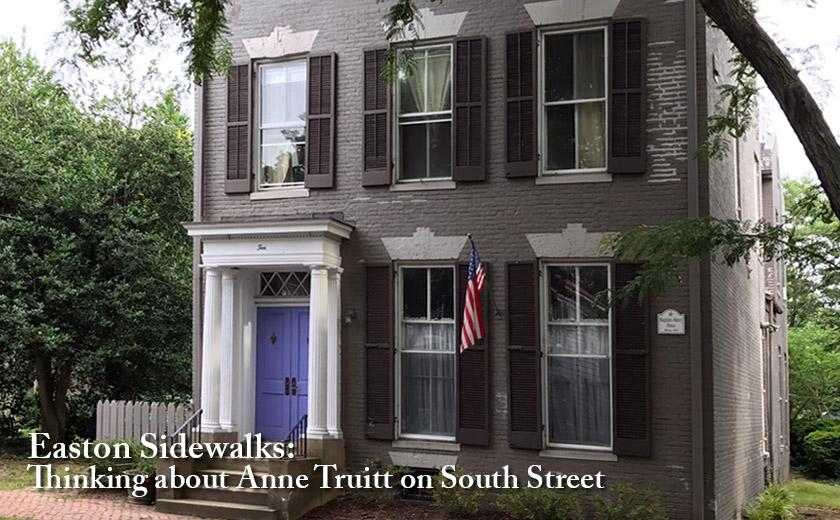
Anne Truitt childhood home in Easton
One of the more interesting projects that the Talbot Historical Society recently introduced was a running list of the most respected and well-known Talbot County residents over the last three hundred years or so. It’s a fascinating lineup but one can’t recall seeing Anne Dean Truitt’s name among the top one hundred.
There should be no surprize with that omission. While Anne Truitt’s sculptures and art are just a few degrees south of Andy Warhol’s work in commercial value these days, and the subject of more than a few major retrospectives at such places as the Hirshhorn Museum since her death in 2004, it is still understandable that this brilliant art minimalist, who grew up on South Street, would not be on the tip of the tongue of most folks living in Easton these days.
Nor was Truitt in Easton that long. Her family left town when she was fourteen for Asheville, and never really returned to the Eastern Shore except to visit friends from time to time. The artist would move on to Bryn Mawr College, then training in psychology at Yale, and eventually marry to James Truitt, a Washington Post reporter who eventually became president of Newsweek.

Anne Truitt
One would think with that kind of biography, Anne Truitt’s Easton days would be a very limited chapter in her memory bank of experiences. But the truth was that the artist would continue to keep her memories of Easton and Talbot County very much alive as she matured as an artist.
We know this to be true from the publication of her best-selling journal, Daybook, which was published in 1982, where she recalls her life in Easton and documents the impact that the landscape of Talbot County had on her work.

Attention Rewarded: Anne Truitt
Whether it be on a farm just off of Leehaven Road or the family home on South Street, Truitt’s mother philosophy that, “children should be brought up like cabbages — with lots of sun and space and let alone to grow,” allowed Anne to roam as she pleased during the 1920s and 1930s. Or, as she wrote, “and so it was with the little town of Easton, on Maryland’s Eastern Shore: an orderly scattering of houses, mostly white clapboard, so small that even on my short legs I was able to encompass the town’s dimensions. ”
Truitt also fell in love with proportions as well as dimensions in Talbot County. She writes in her journal:
“The actual landscape, of course, remains, and I returned to the Eastern Shore of Maryland now and then to look at it again. And at the houses in which I grew up. The first of these is owned by a friend, and when I visit her I can see once again, by scrunching down, the proportions that taught me as a child. The house was probably built around the middle of the 18th century and is never been remodeled in any way. But what I remember is clearer to me than what I see today. I go back and yet cannot go back. Time has locked it all away from me as if I had died. I am irremediably thrust into my own mind, and there I find it all, in weights and lines and colors distinctively my own. Just as in my work I found it was the essence rather than the objects that held me, so I find it is only the abstract part of my experience that is real for me. I wonder around the houses and gardens and see them with my physical eyes, while behind them glimmers the radiance of my vision. I have no home but me.”
Easton Sidewalks is an ongoing series of portraits of its streets and people



Write a Letter to the Editor on this Article
We encourage readers to offer their point of view on this article by submitting the following form. Editing is sometimes necessary and is done at the discretion of the editorial staff.